As explored in Green Auto Market during fall 2019, the transformation of cars and fuels will likely take much longer than 2030. That being said, it looks quite likely that over the next 10-to-20 years, we’ll be seeing a growing part of ground transportation moving toward the forecasted transition. So, here’s a look at why we’re going to be willing to take an electric automated shared ride 10 years from now.
1. Traffic congestion will be getting worse.
A Texas A&M Transportation Institute study from last year expects that traffic congestion across the country will increase by roughly 20 percent in 2025. Five cities will see the worst of it: Los Angeles, San Francisco, Washington, 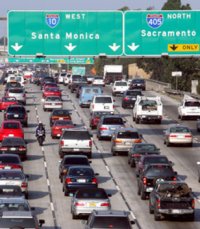 DC, New York City, and Boston. For now, we’re looking for alternative routes and better times to drive somewhere (such as leaving extremely early for an important appointment). New vehicle sales are expected to continue to increase in the developed (and developing) world over the next decade, and these vehicles are made to last longer than in the past — perhaps 12 to 15 years before being taken off roads. Another trend having an impact will be young people moving to cities around the world, and needing some form of transportation. Uber rides, and competitors in mobility, will be part of it; along with personal and fleet vehicles, and commercial trucks and buses. Another key indicator of urban growth: trillions of dollars are being secured to fund development of sporting and entertainment centers; university R&D zones; office buildings; residential properties for both young urban dwellers and senior living communities; and new and revitalized retail shopping districts. This means more and more commercial vehicles will be showing up in metro areas along with more passenger vehicles for personal mobility.
DC, New York City, and Boston. For now, we’re looking for alternative routes and better times to drive somewhere (such as leaving extremely early for an important appointment). New vehicle sales are expected to continue to increase in the developed (and developing) world over the next decade, and these vehicles are made to last longer than in the past — perhaps 12 to 15 years before being taken off roads. Another trend having an impact will be young people moving to cities around the world, and needing some form of transportation. Uber rides, and competitors in mobility, will be part of it; along with personal and fleet vehicles, and commercial trucks and buses. Another key indicator of urban growth: trillions of dollars are being secured to fund development of sporting and entertainment centers; university R&D zones; office buildings; residential properties for both young urban dwellers and senior living communities; and new and revitalized retail shopping districts. This means more and more commercial vehicles will be showing up in metro areas along with more passenger vehicles for personal mobility.
2. Car crashes and road repair will have an exponential effect.
More people moving into major metro areas means more car crashes. The fatality rate per capita has been declining in the US for several years, but we’re going to see a lot more vehicles on highways and city streets. Anyone doing a good deal of driving in major metros these days knows the debilitating effect a car crash can have on traffic; and that also applies to maintenance crews blocking off a lane or two for road construction or repair. Highway construction projects plus car crashes, major or minor, means a lot more headaches for drivers. For drivers planning their day with a tight schedule to get from Point A to Point B by a set time, there’s nothing worse than suddenly seeing warning lights up ahead and long lines of stopped traffic.
3. The magic GPS mapping system will not be invented.
Realtime traffic data is getting better all the time, but it has a very long way to go as cities expand exponentially. Products like StreetLight Data, Garmin, Waze, Google Maps, and Apple Maps, are getting better all the time. But there are too many cars out there, and traffic will become more congested every year. Throw in car crashes, road and lane closures, bad weather, crowded events, and other occurrences, realtime traffic data won’t be fast enough to help divert traffic jams with more and more vehicles coming to roads. And what if there aren’t any viable alternate routes, as if all the traffic is being blocked off? Bad news for those who hate being stuck in traffic.
4. You can expect more tickets and expensive parking.
It’s much easier to get a parking ticket these days, and the cost of parking in a garage or outdoor lot is going up. When you do go to park you car, especially in a residential neighborhood, take a careful look at the posted signs. City planners are trying to keep their curbsides and streets from being taken over by drivers needing to park their cars somewhere. Residents and business owners complain about the stress and inconveniences of parking becoming a rare, valuable commodity, and want to see their city enforce parking codes. Some people wonder if cities are also bringing in additional revenue by putting parking meters and red zones all over town. Drivers usually have to pay for parking to go anywhere, and the hourly rates are going up. You can always download parking apps to find available parking spots, hopefully at a reduced rate. But if the parking spaces are gone, they’re gone.
5. Gasoline and diesel will eventually go up and stay high in pricing.
Consumers and fleets have been spoiled since 2014 when gasoline and diesel prices dropped and stayed relatively low over the years in the US. But it will eventually become more expensive to pump deeper for oil as the supply dries up. Fuel consumers will also have more options to choose from. Global oil demand will hit a plateau around 2030 after seeing an increase of 1 percent globally over the next decade, the International Energy Agency predicts. More energy efficient cars and electric vehicle growth will offset demand, the study said. The cost of electric cars and other clean vehicle options (hydrogen fuel cell, natural gas, propane autogas, hybrids, renewable fuels, and maybe even fuels that are yet to become viable today), will come down in cost and will become more accessible in fueling infrastructures.
6. Desperation over climate change.
Climate scientists have been putting out dark and dreary reports in the past couple of years on the global environmental crisis and expectations for the next few years. Climate change is gradually morphing into climate catastrophe. While the predictions are bleak, I still find many people out there who want to do something about it — drive a clean vehicle, get solar power on their roof, become more energy efficient, recycle all they can, and analyze where they’re going to spend their money, who to vote for, and where to share their opinions on climate change and social responsibility.
7. Car buffs are not looking forward to the future.
For folks who love part of the American dream, its depressing to think of the near future taking away their choices as a car owner. What if your dream car is a 1968 Pontiac GTO or a Dodge Charger from that model year? A 1958 two-tone Cadillac Eldorado? And what happens to your giant, loud Harley Davidson motorbike? Will they be able to give up their gas-guzzling performance cars and bikes to go to work in a quiet, boring electric autonomous shuttle? They’ll have to grieve and move on, but some of them won’t be able to give up their dream cars — and may once again lobby the Environmental Protection Agency to allow a loophole for a few classic cars.
8. The idea is appealing for people who don’t want to feel chained to their steering wheels.
If you ask around, and review a few studies, surveys, and feature articles, you’ll find that there are many consumers who look forward to not feeling enslaved by having to drive their cars. They look forward to avoid feeling knotted up in tension from getting stuck in traffic once again, being late for work, or burned out and exhausted when they finally make it home. It’s discouraging to wait and wait for traffic to lighten up, and then find out you only get to go another three feet forward and then stop again for what can feel like eternity. Many of us look forward to doing something else during that downtime instead of being chained to the steering wheel. It would be much more interesting to engage in conversations with fellow ride-sharers, or to friends by way of phone. What about reading that great book — or writing that book you’ve been thinking about for years? There’s plenty more to do such as responding to emails, watching a movie or TV series, getting more skilled at playing video games, online dating messaging, listening to good music, catching up on social media, and much more. Sound good? It does to me.
9. Saving money on transportation.
When you include the cost of auto financing, insurance, maintenance and repairs, tire replacement, and gasoline, you are looking at spending around $750 per month, or $9,000 per year, on average, for car ownership in the US. What if you lived fairly close to work and didn’t want to own a car anymore? You could ride the bus, take a few Uber or Lyft rides, ride your bike, rent a car or pay for a few hours of car-sharing, and put in a lot of miles walking. What would that cost you? You could probably whittle that down to around $250 per month. That would save you about $500 per month.
10. Competition will rise and choices will be plentiful.
What will it look like to see companies such as General Motors, Ford, Tesla, Waymo, Uber, Lyft, Apple, Daimler, BMW, Toyota, Honda, Hyundai, and China’s Baidu, launching advanced mobility services? Alphabet’s Waymo division took the first step in December 2018 by starting the Waymo One autonomous ride service in Phoenix’s suburb of Chandler. Members of its early rider program (that will go out to the general public eventually) have access to an autonomous ride-hailing service. There are many other test projects underway in North America, Asia, and Europe. These companies are hoping to build significant profit channels and to play leading roles in the future of mobility; with the expectation that car sales will be declining over the years. For now, it’s a wait and see on which companies will line up all the requirements to achieve government-approved, safe, efficient, and durable shared rides.
And in other news………
Formula E: Jaguar driver Mitch Evans surprised racer Andre Lotterer who looked to be giving Porsche the top spot Sunday at Mexico’s E-Prix. Evans took the trophy for the fourth Formula E electric car race this season, surviving a turbulent race in Mexico that meant 14 drivers crashed and couldn’t finish the race. One of them was Mercedes’ Stoffel Vandoorne, hitting the wall at the exit of Turn 3. Vandoome finished fourth in the championship, the first time he failed to score first place this season.
Kenworth electric truck: Kenworth will collaborate with vehicle component supplier Meritor on electric powertrain development for Class 8 Kenworth T680E battery-electric vehicles. The electric Kenworth T680E will be a short-hood day cab in tractor configurations of 4×2 and 6×4 axles and as a 6×4 axle straight truck. The T680E will offer an operating range between 100 to 150 miles, depending on application.
Hydrogen trucks: Hyundai Motor Corp. is entering the hydrogen truck market. The South Korean automaker is partnering with Yeosu Gwangyang Port Corp. to commercialize hydrogen fuel-cell trucks in their country — a move with a broader market potential as Hyundai plans to introduce two hydrogen trucks for logistics transportation by 2023, and then add 10 more. Hyundai is preparing to compete with Nikola, Toyota, and Tesla’s Cybertruck and Semi on the truck side and support its offerings in the fuel cell car segment.
German Gigafactory: Tesla has been ordered to temporarily halt preparations for a car and battery factory in Berlin after environmentalists won a court injunction on Sunday. The company had been clearing forest land near Germany’s capital city, ahead of building its first European car and battery plant.

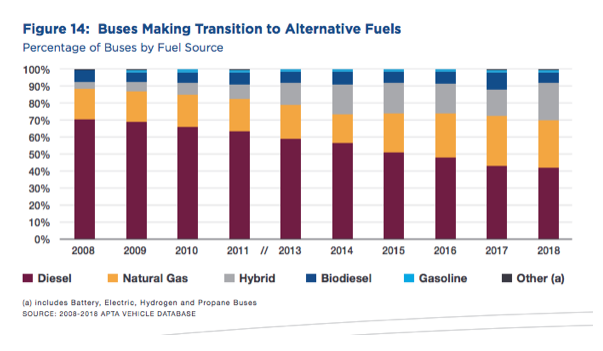
 Francisco launched the Cruise Origin,
Francisco launched the Cruise Origin, 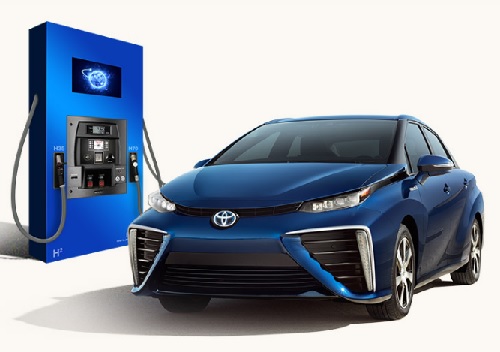 Co., that concludes there are now three core market drivers: a steep drop in production costs, higher load utilization cutting distribution and refueling costs, and additional cost drops from scaling up of end-use equipment manufacturing. The study looked at 25,000 data points gathered and analyzed from 30 global companies with cost reductions expected across several different hydrogen applications. These sectors include long-distance and heavy-duty transportation, industrial heating, heavy industry feedstock, and others, which make up about 15 percent of global energy consumption. Of course, much support is needed and Hydrogen Council is championing effective government policies to be adopted in key geographies, along with investment support of around $70 billion in the lead up to 2030 in order to scale up and produce for a much more cost-competitive fuel. “The Hydrogen Council believes that the report’s findings will not only increase public awareness about the potential of hydrogen to power everyday lives, but also debunk the myth that a hydrogen economy is unattainable due to cost,” said Euisun Chung, executive vice chairman of Hyundai Motor Group and co-chair of the Hydrogen Council. “If we are to reach our global climate goals by mid-century and reap the benefits of hydrogen, now is the time to act.”
Co., that concludes there are now three core market drivers: a steep drop in production costs, higher load utilization cutting distribution and refueling costs, and additional cost drops from scaling up of end-use equipment manufacturing. The study looked at 25,000 data points gathered and analyzed from 30 global companies with cost reductions expected across several different hydrogen applications. These sectors include long-distance and heavy-duty transportation, industrial heating, heavy industry feedstock, and others, which make up about 15 percent of global energy consumption. Of course, much support is needed and Hydrogen Council is championing effective government policies to be adopted in key geographies, along with investment support of around $70 billion in the lead up to 2030 in order to scale up and produce for a much more cost-competitive fuel. “The Hydrogen Council believes that the report’s findings will not only increase public awareness about the potential of hydrogen to power everyday lives, but also debunk the myth that a hydrogen economy is unattainable due to cost,” said Euisun Chung, executive vice chairman of Hyundai Motor Group and co-chair of the Hydrogen Council. “If we are to reach our global climate goals by mid-century and reap the benefits of hydrogen, now is the time to act.”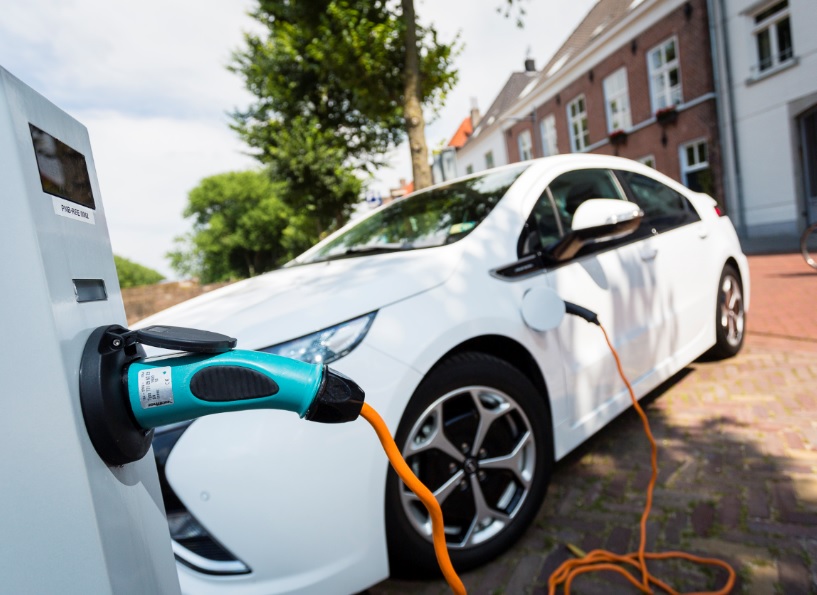 The federal tax credit for purchasers of electric vehicles is ending for automakers selling the highest volumes and hitting their caps on allowable sales — and it appears that won’t be extended. The cap is at 200,000 units sold by brand of battery electric vehicles with a $7,500 tax credit. Tesla and General Motors have already passed that mark, and just had their pleas for extension ignored by the Trump administration and Congress in the new federal budget. Nissan will be next in line, followed by Ford and BMW. Automakers and EV advocates will need to turn to state incentives. The Top five sales states in EV sales during 2018 — California (about 45 percent of total), New York, Washington, Florida, and Texas — have their own state incentives that will have to be tapped into more.
The federal tax credit for purchasers of electric vehicles is ending for automakers selling the highest volumes and hitting their caps on allowable sales — and it appears that won’t be extended. The cap is at 200,000 units sold by brand of battery electric vehicles with a $7,500 tax credit. Tesla and General Motors have already passed that mark, and just had their pleas for extension ignored by the Trump administration and Congress in the new federal budget. Nissan will be next in line, followed by Ford and BMW. Automakers and EV advocates will need to turn to state incentives. The Top five sales states in EV sales during 2018 — California (about 45 percent of total), New York, Washington, Florida, and Texas — have their own state incentives that will have to be tapped into more.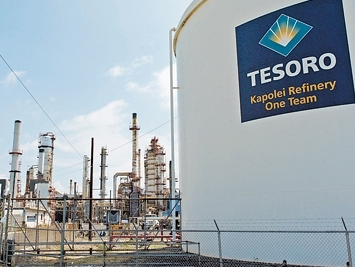 credits at its Tesoro refinery in Martinez, located in the East Bay of the San Francisco Bay Area. California Air Resources Board posted a refinery project application for public comment on Sept. 20, which will close on Sept. 30, 2019.
credits at its Tesoro refinery in Martinez, located in the East Bay of the San Francisco Bay Area. California Air Resources Board posted a refinery project application for public comment on Sept. 20, which will close on Sept. 30, 2019.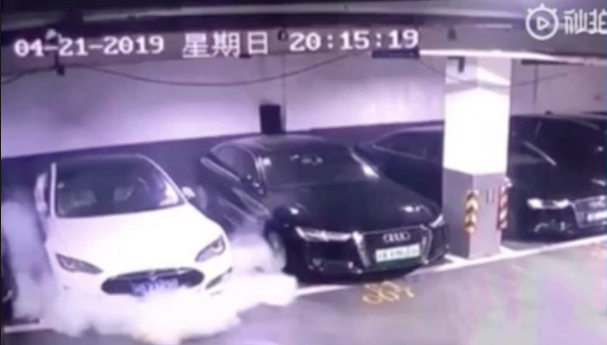 company for years — fires starting in its battery packs, and crashes happening while its Autopilot semi-autonomous driving system had been activated. Reports have emerged on a Tesla fire
company for years — fires starting in its battery packs, and crashes happening while its Autopilot semi-autonomous driving system had been activated. Reports have emerged on a Tesla fire